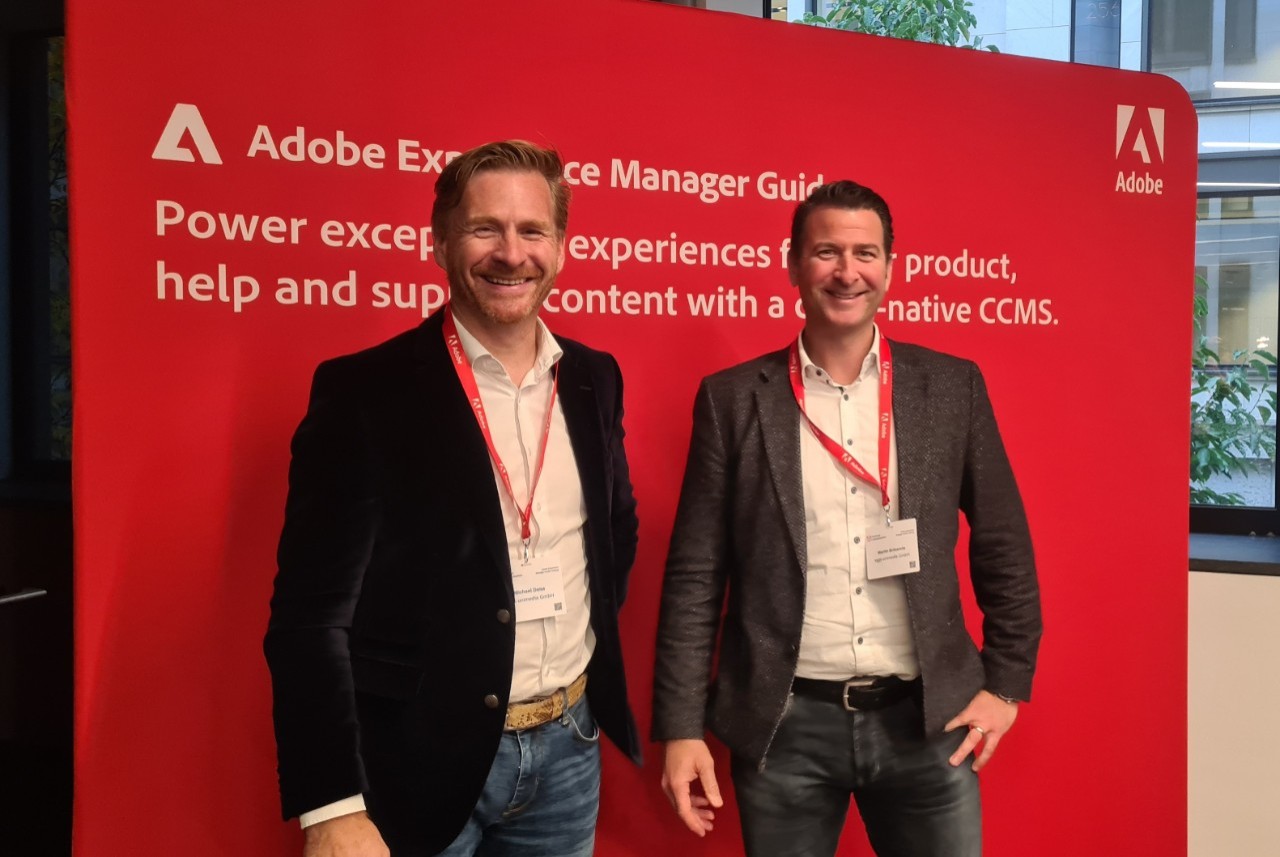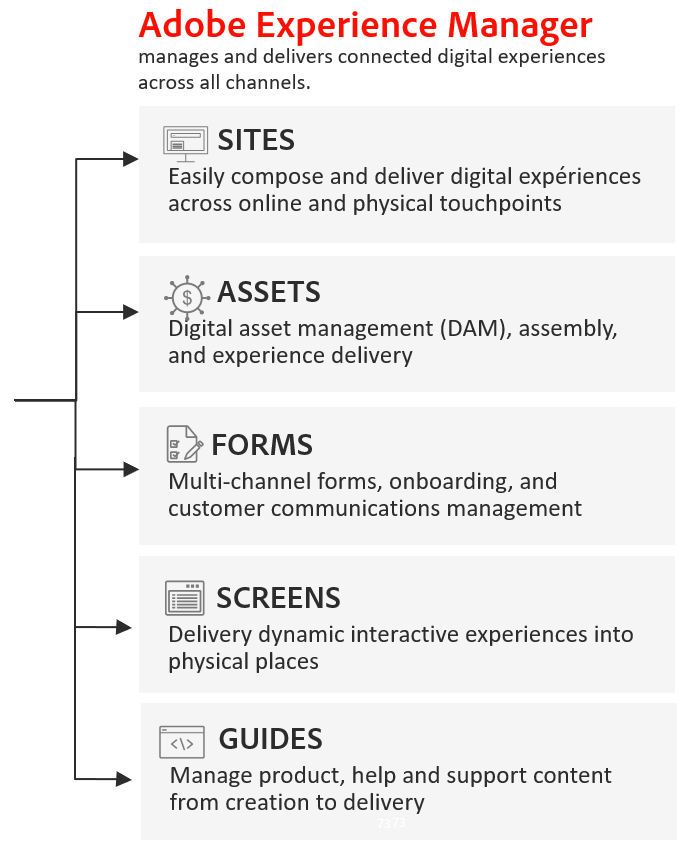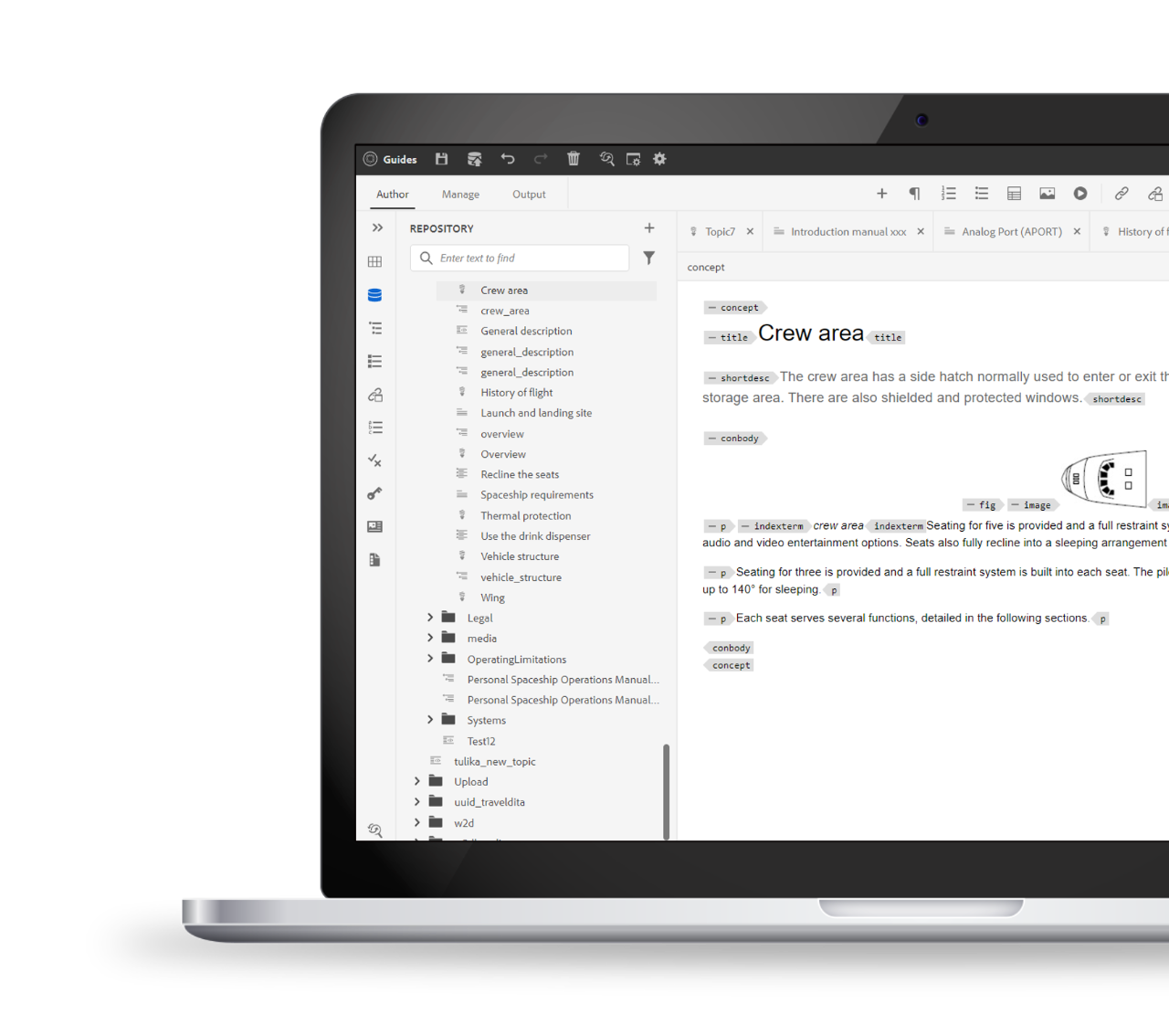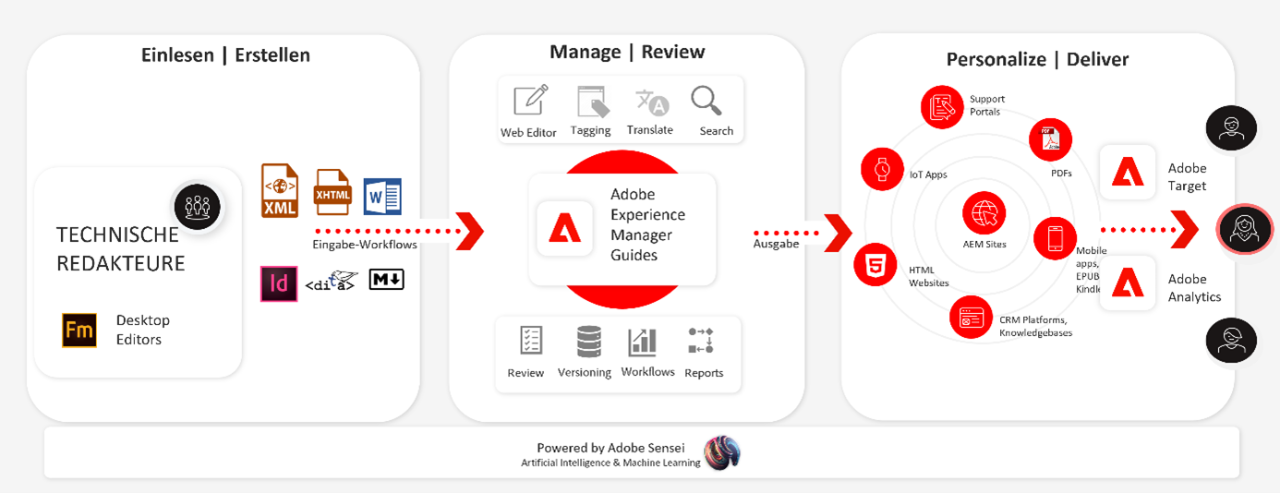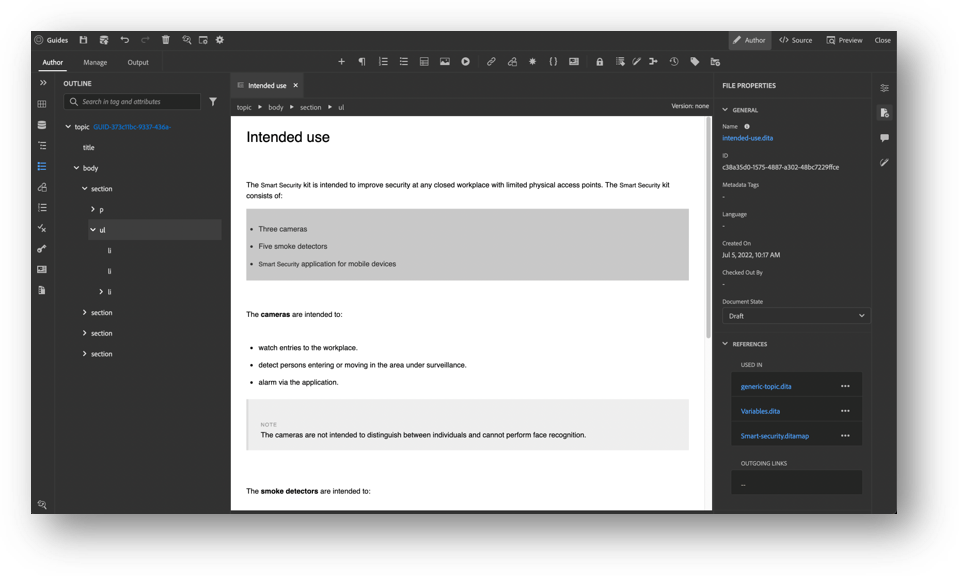Technical documentation with Adobe Experience Manager
In late 2022, Adobe invited selected partners, interested parties, and customers to the first AEM Guides Meet-Up in Germany. Michael Deiß and I did not miss the chance to get to know the roadmap of the solution and the management, marketing, and engineering team of the AEM Guides Business Unit.
AEM Guides is a so-called CCMS (Component Content Management System). It enables companies to easily create and reuse technical content as centrally managed content – for example, for further instructions or other language versions. In companies, AEM Guides is the digital platform for the “HOW,” i.e., how do I install ABC, how do I repair XY, or how is “this and that” put together? Other digital platforms, such as a classic CMS, are responsible for the “WHAT” and “WHEN.” Ensuring the content’s accuracy and consistency is of central importance with these systems.

